How Carleton architecture students helped a South African village rebuild after fire
October 26, 2023

Wupperthal is a remote village in the Cederberg mountains in the Western Cape province of South Africa.
Nearly five years after visiting South Africa as students, a group of Carleton University architecture alumni have learned that their efforts to help a historic village devasted by fire have come to fruition.
“For me, it’s the reason I went into architecture, in the hopes of doing something that will make a difference to people and communities who really need and deserve it,” says Gabrielle Argent, an Ottawa-based intern architect.
Argent was one of 12 Master of Architecture students at the Azrieli School of Architecture & Urbanism who travelled to Cape Town, South Africa, in February 2019 for a six-week experience called an Option Studio.
The other students were Nahla Aldhobaib, Andrea Forero, Shannon Kitley, Laurence Massicotte, Dana Rathwell, David Woodruff, Justin Lewis, Kareem Mitchell, Kevin Leung, and Joey Doherty. Associate Professor Ozayr Saloojee and former school director Jill Stoner organized the studio.
The Carleton group was there to study under the direction of the School of Explorative Architecture (SEA). This non-profit architecture school describes its teaching and learning mission as aiming “to counteract the decimation of imagination left by institutionalized inequality and poverty.”
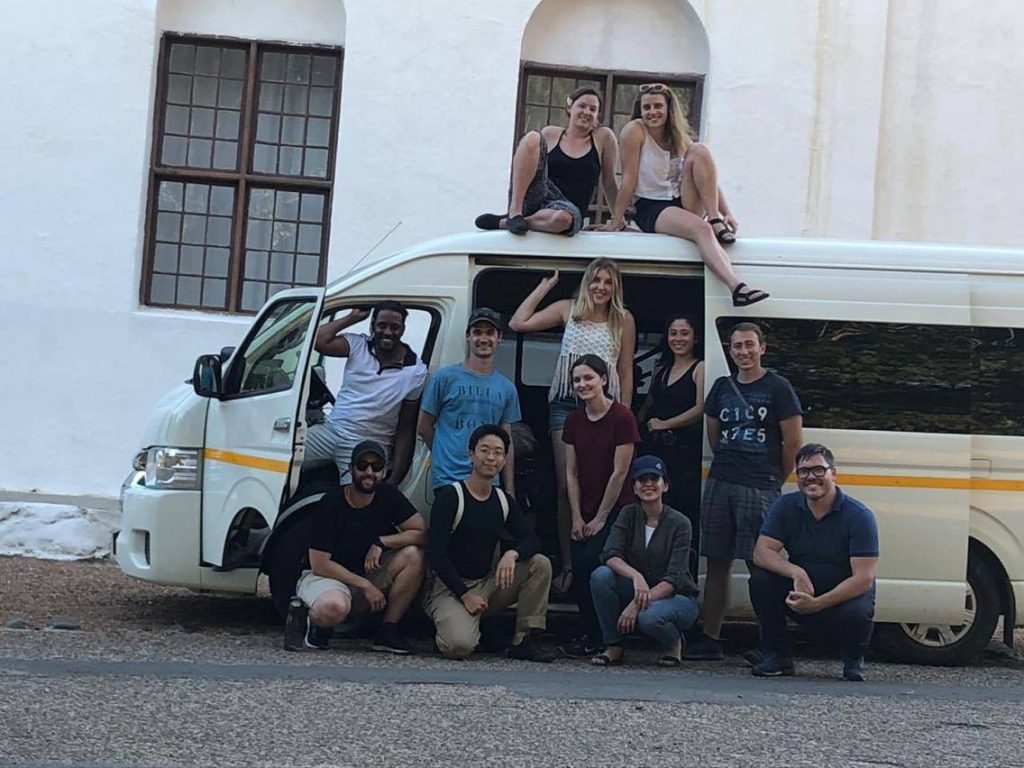
12 Master of Architecture students went to South Africa in 2019 .

Carleton students at the School of Exploratory Architecture in Cape Town
Several weeks before their arrival, a fire destroyed most buildings, including 53 homes, at Wupperthal. The remote village in the Cederberg mountains in Western Cape province had been founded by German missionaries in 1830. It is a designated heritage area, and many houses were over 100 years old. It is also financially impoverished, with most families dependent on small-scale farming.
The blaze on December 31, 2018, claimed one life and displaced more than 200 residents. Poor and without insurance, many people were left homeless.
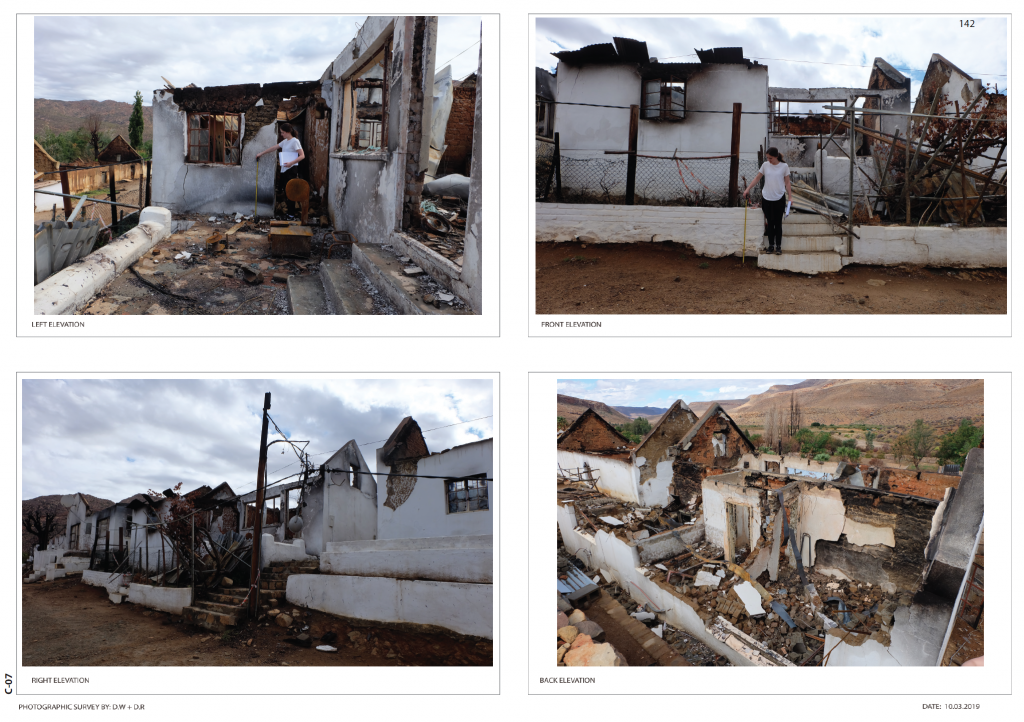
Students documented the remnants of houses.

Founded in 1830, Wupperthal is a heritage area.

The fire left many people homeless.
The teachers at SEA, Dr. Nicholas Coetzer, Mokena Makeka, and Albert van Jaarsveld, created an opportunity for the Carleton students to help through direct community engagement and action. They launched the Wupperthal Disaster Relief Travelling Studio and arranged access to the disaster site.
Over two trips to Wupperthal, the Carleton students documented the remnants of burned homes built in the traditional Cape Dutch Style, measuring, photographing, sketching, and recording what remained.
“The work of surveying and documenting the town site tapped into the observation and analytical skills developed in architecture school,” notes participant David Woodruff, now an intern architect in Edmonton.
“The Wupperthal project speaks to the value that an architectural skillset can provide outside of more traditional, top-down design services, especially when considering how architects can provide value to communities and social causes,” he says.
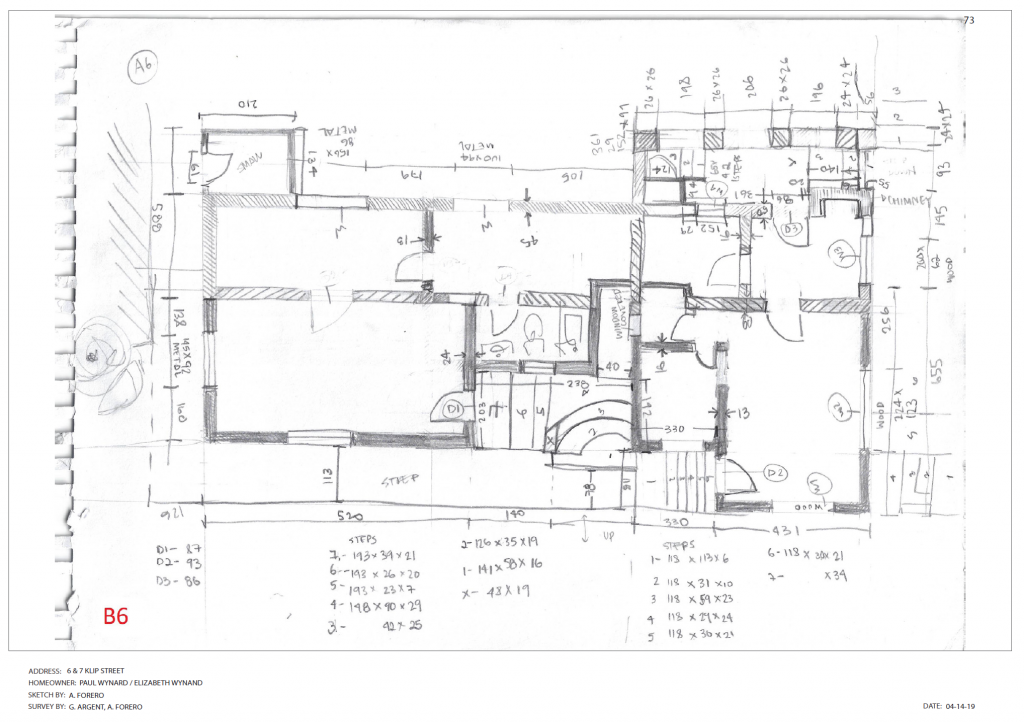
The students made plans, elevations, sections and sketches.
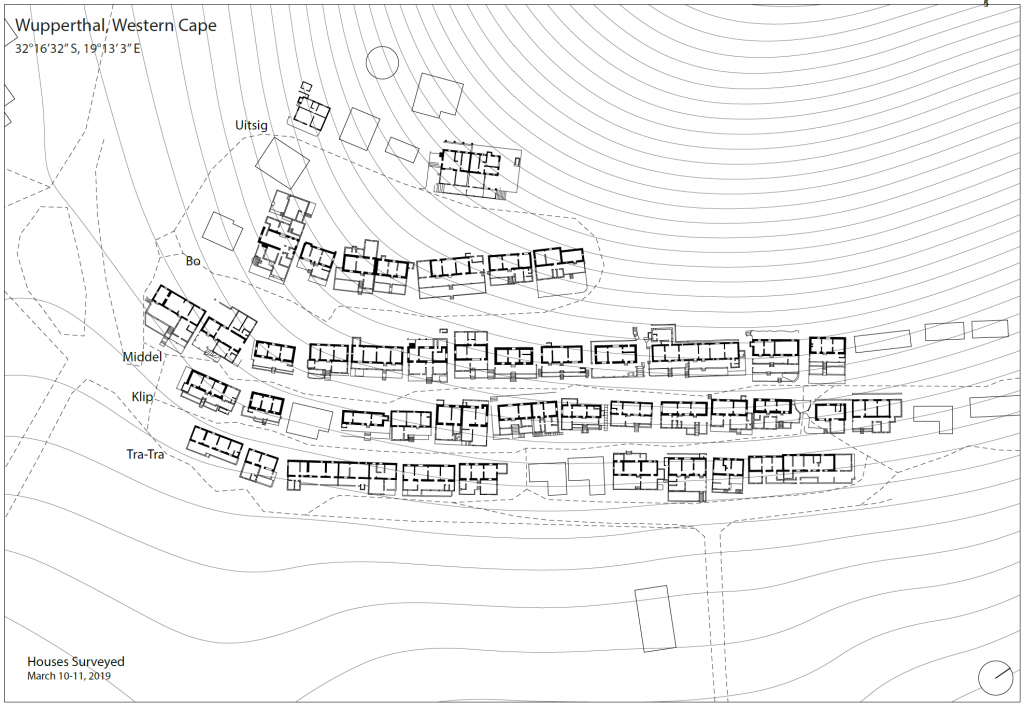
Laurence Massicotte, currently an intern architect in Montreal, recalls seeing children watching and giggling.
“It felt weird to be working on their houses without them knowing what we were doing,” she says. “We asked them to help us take the full length of the house’s measurement. They helped us hold the tape measure, and it felt nice to connect with them and make them feel included in the project.”
The Carleton group also interviewed fire victims to record family ownership history and understand what was valued about the spaces they had had. During community consultations, they heard of the importance of kitchens and living rooms where residents came together with their families and bonded with community members.
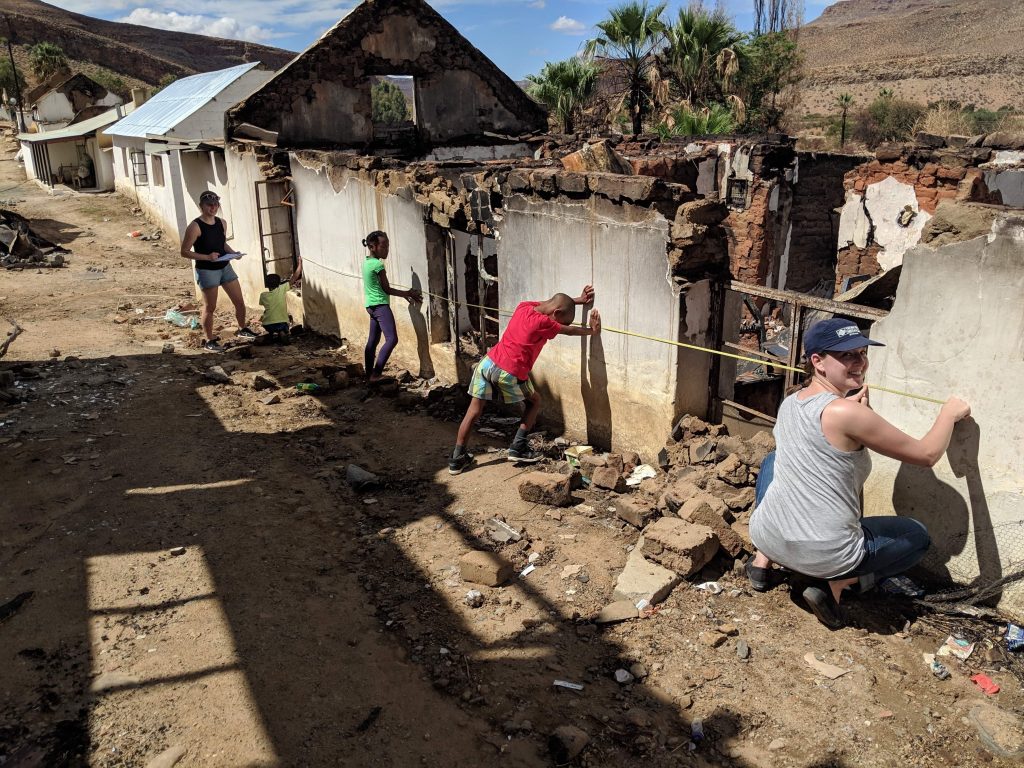
Shannon Kitley (L) and Laurence Massicotte (R) measuring houses.
“Students applied their skills and knowledge in service of the community, fostering empathy, cultural understanding, and social responsibility,” says van Jaarsveld.
“The community consultations and collaborations with residents, institutions, and administrative bodies ensured responsive architectural interventions that respect the local context.”
Finally, the students compiled their observations into a report of more than 200 pages, with plans, elevations, sections, and sketches for the houses. They also proposed design ideas for fire safety.
They submitted the report to the local government and Heritage Western Cape, the responsible heritage organization, to help procure funding and make the rebuild process easier if there ever was one.
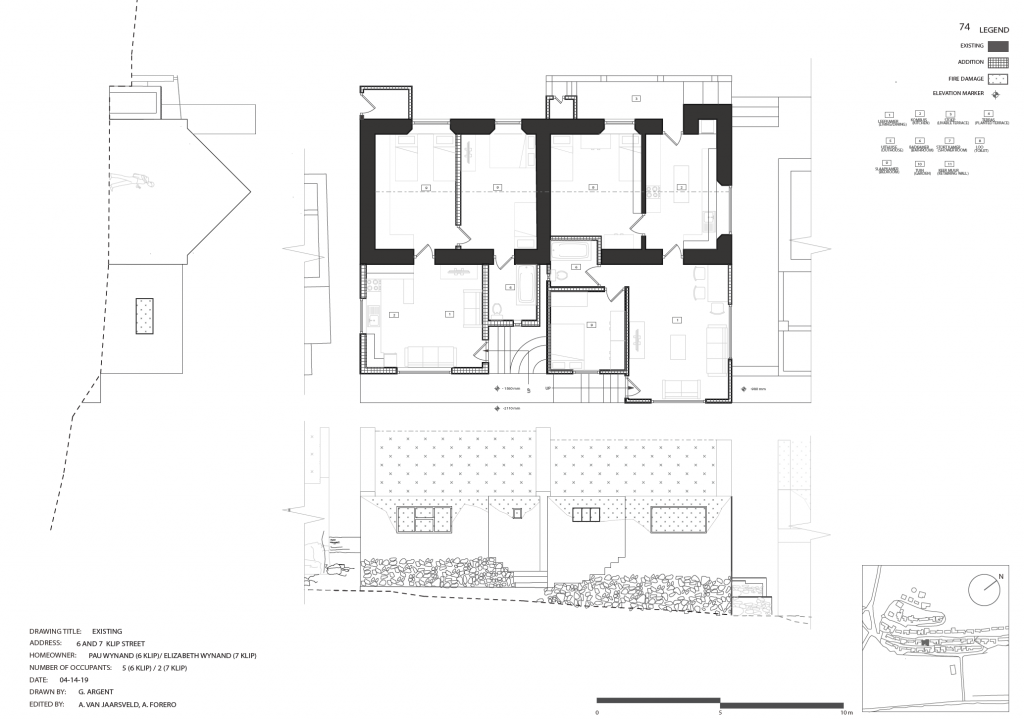
The students submitted a report of more than 200 pages to authorities.
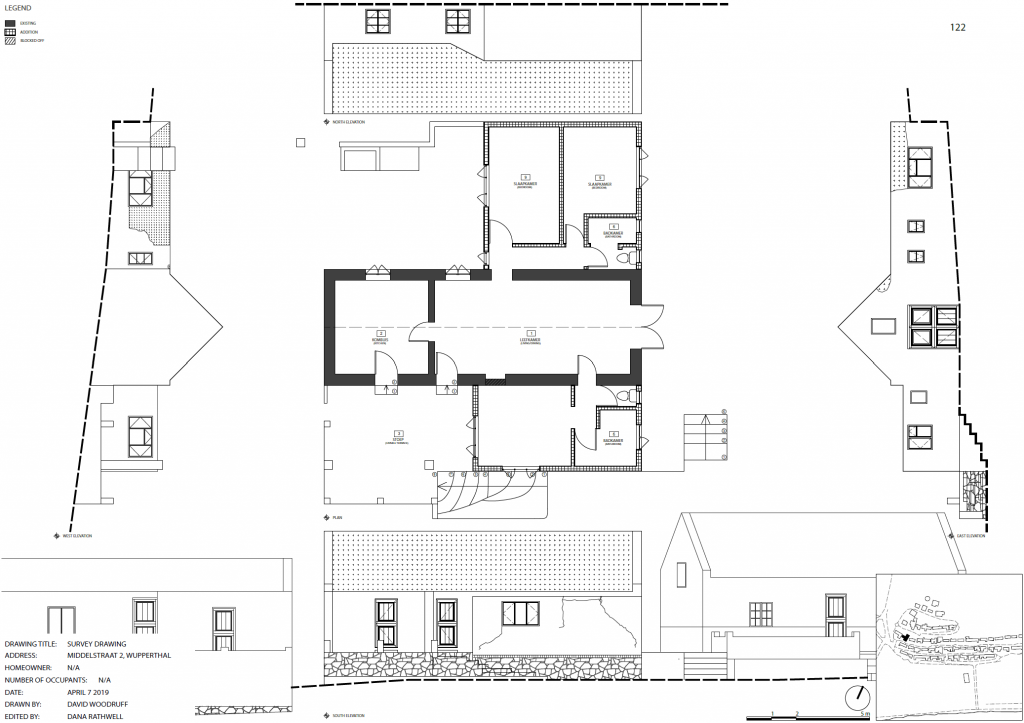
Without the student work, rebuilding may not have happened.
“We had a unique situation where we came in at the exact right time initially after the fire incident, and we were able to do it with minimal cost, efficiently and submit the document with a sense of urgency,” says Argent.
The work of the Carleton students proved crucial for securing funding and as base information for the Cape Institute of Architecture (CIFA), which did pro bono work to draw up the 53 house plans, complete the necessary heritage assessments, and obtain approvals.
Without the student work, rebuilding may not have happened or been much delayed by the alternate and costly methods which meeting with residents and assembling base drawings would have required.
“The resultant documentation formed the basis of the heritage assessments, as well as the eventual building plans and specifications,” says CIFA’s John Wilson Harris. “The important streetscapes are being reinstated, all of which was initiated and assisted by the work of SEA and Carleton University students.”
So far, 43 of the 53 houses have been fully restored and handed over to the residents, most of whom have been living in temporary shelters on the sports field.
Maria Wynand, 86, was one of five homeowners who gratefully received a key to a whitewashed house with a thatched roof this past summer. “The cold and wetness in the temporary houses were just too much for my old legs,” she told a local reporter.
“While a group of students from Canada is an unlikely crew to set out getting primary data from the rubble, I think many of us felt that we could make a valuable contribution to a pressing cause,” says Woodruff.
“In any building project, there are many people involved from conception to realization, and it is fulfilling to be able to look back and identify how and where your own contributions — however small they may be — were a part of achieving the greater goal.”
